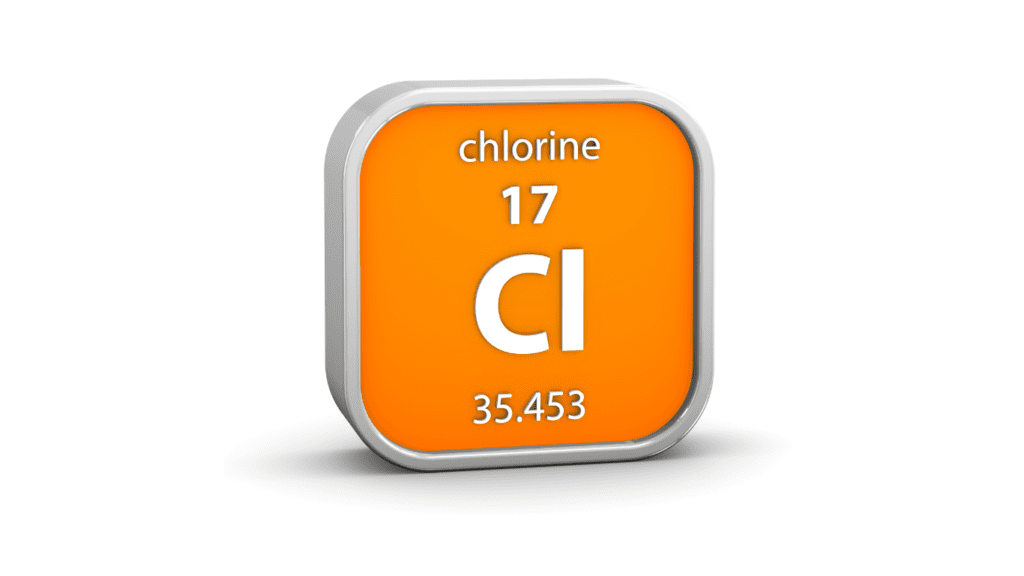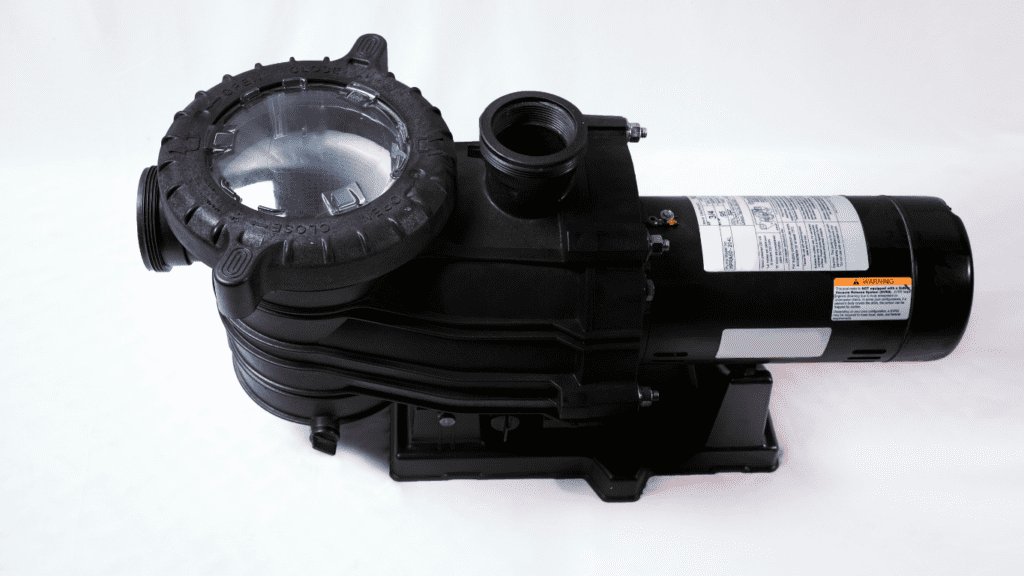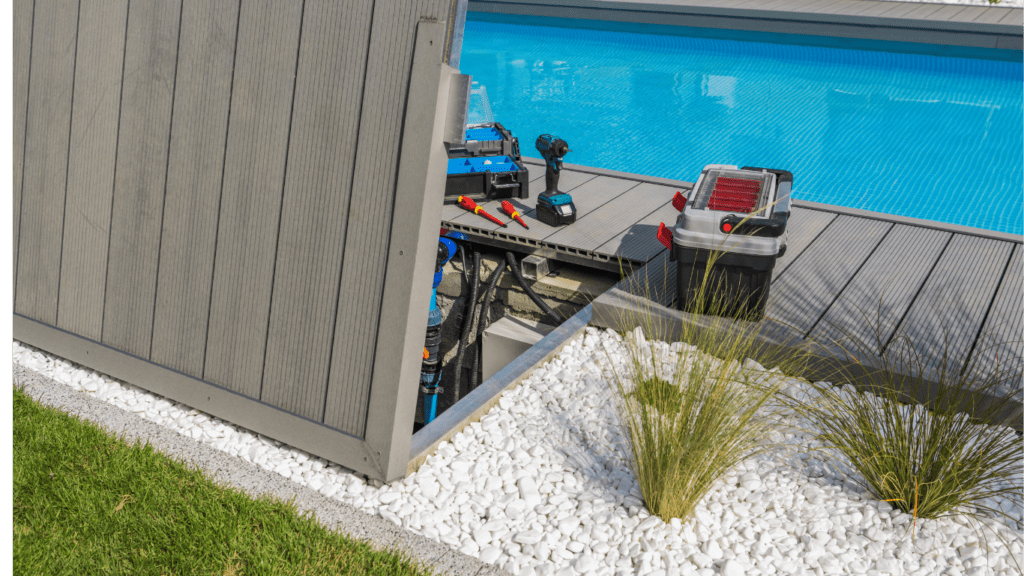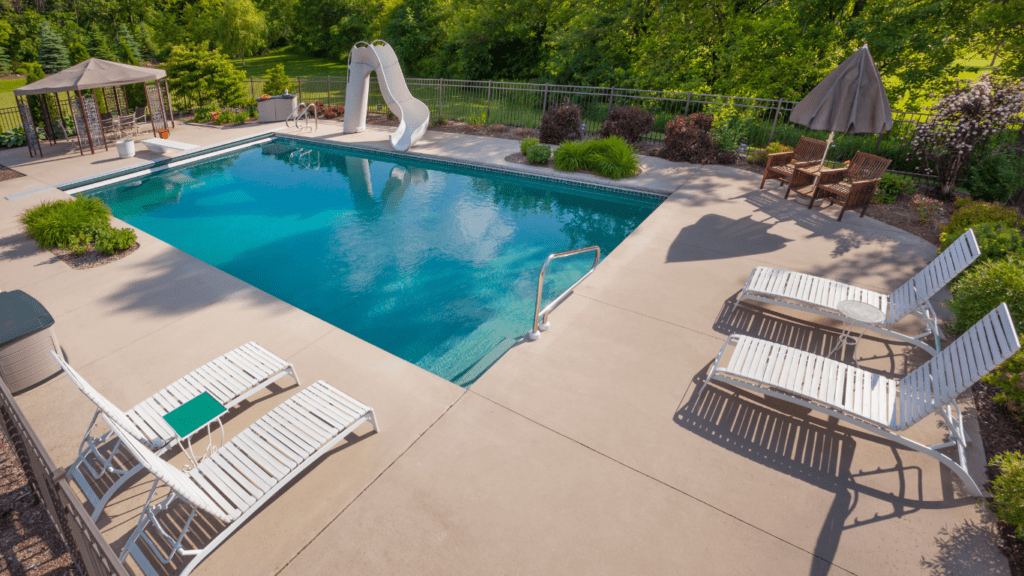How To Open A Pool For Summer: The Must-Have Guide For Pool Owners
This post may contain affiliate links. As an Amazon Associate, I earn from qualifying purchases at no extra cost to you. Read my full disclosure.
With the arrival of warmer temperatures, it’s finally time to embrace the much-anticipated pool opening season! Whether you’re an experienced pool owner or a beginner, it’s crucial to follow the proper procedures to ensure your inground pool is prepared for swimming.
Before you dive right in, it’s essential to go through the required steps to have a successful pool opening. Taking a proactive approach can save you both time and money while preventing future complications.
By starting early, you can maintain a clear, healthy pool that’s ready for your enjoyment throughout the summer. In this article, you will learn how to open a pool for summer.
Now, let’s delve into the details of opening your swimming pool.
Essential Steps for Pool Preparation—The Basics

Preparing your pool for the summer season involves several important steps. Here are some key steps to follow when getting your pool ready for summer:
Cleaning and Maintenance:
- Clearing debris and skimming the surface
- Scrubbing the pool walls and floor
- Cleaning and maintaining pool filters
Water Chemistry:
- Testing and balancing pool water
- Adjusting pH levels and adding sanitizers
- Using algaecide and clarifiers for prevention
Equipment and Repairs:
- Inspecting and servicing pool equipment
- Checking for leaks and addressing repairs
Safety Measures:
- Securing the pool area with fencing and gates
- Ensuring the availability of safety equipment
Regular Maintenance:
- Establishing a routine for skimming, vacuuming, and filter maintenance
- Monitoring and maintaining the water level
Pool Accessories and Amenities:
- Adding pool toys, floats, and games
- Creating a comfortable poolside area with outdoor furniture
These are the basic steps on how to open a pool for summer. You can ensure that your pool is clean, well-maintained, and safe for summer enjoyment. But continue reading as we dive deeper.
Pool Equipment Checklist

When it comes to maintaining your pool, having a well-functioning equipment system is crucial. Here’s a checklist of essential pool equipment to keep in mind:
- Pool Pump: The pump circulates water through the filtration system, ensuring proper water flow and filtration. Check the pump for any signs of leaks, unusual noises, or malfunctioning parts.
- Pool Filter: Filters remove debris, dirt, and other impurities from the water. Depending on your pool setup, you may have a sand filter, cartridge filter, or DE (diatomaceous earth) filter. Regularly clean or backwash the filter, and inspect it for any damage or clogs.
- Pool Skimmer and Basket: The skimmer and basket trap leaves, debris, and larger particles before they reach the pump and filter. Empty the skimmer basket regularly and clean out any debris or obstructions.
- Pool Heater: If you have a pool heater, inspect it for any signs of damage, leaks, or blockages. Check the gas supply (for gas heaters) or electrical connections (for electric heaters) to ensure proper functioning.
- Pool Chlorinator or Salt Chlorine Generator: If you use a chlorinator or salt chlorine generator, ensure that it is functioning correctly and providing the desired chlorine levels in the pool. Check for any clogs or blockages in the system.
- Pool Timer and Control Panel: Verify that the pool timer and control panel are set correctly and functioning as intended. Check the programming and ensure that all settings are accurate.
- Pool Lights: If you have underwater or perimeter pool lights, inspect them for any damage or water leakage. Replace any faulty bulbs or fixtures, and ensure the electrical connections are secure.
- Pool Cover: If you use a pool cover, examine it for tears, holes, or worn-out sections. Ensure that the cover is properly fitted and securely fastened when not in use.
- Pool Vacuum and Cleaning Equipment: Check your pool vacuum, brushes, and any other cleaning equipment for proper functioning. Replace worn-out parts or equipment as needed.
- Pool Safety Equipment: Ensure that you have essential safety equipment, such as lifebuoys, safety ropes, and a first aid kit, readily available near the pool area (more on this later).
- Pool Cover Pump: A Pool cover pump is not always necessary, but it can be a useful tool for maintaining the condition and effectiveness of your pool cover.
- Telescopic Pole: Offers Versatile Utility:
- Cleaning: Attach a pool skimmer net, brush, or vacuum head to the telescopic pole for effective cleaning of the surface, walls, and floor.
- Maintenance: Use a telescopic pole for adjusting water return jets, removing debris from filters or pump baskets, and installing pool accessories.
- Safety: Telescopic pole serves as an extended reach tool for reaching individuals or objects in distress in the water.
- Versatility: Adjust telescopic pole to fit pools of different sizes and depths, compatible with various cleaning and maintenance attachments.
Pool equipment is not only essential to ensure a successful pool opening but also plays a crucial role in effective pool maintenance throughout the season. By having the right pool equipment in place, you can keep your pool clean, balanced, and operating at its best, allowing you to fully enjoy your pool all summer long.
Chemicals Needed To Open Pool

When opening your pool for the summer season, you will likely need to add certain chemicals to ensure proper water balance and sanitation.
The specific chemicals required may vary based on your pool’s size, water condition, and the type of disinfection system you use (e.g., chlorine, bromine). Here are some common chemicals you may need to consider:
- Chlorine: Chlorine is commonly used to sanitize and disinfect pool water. You can choose either liquid chlorine, granular chlorine, or chlorine tablets. It helps kill bacteria, algae, and other contaminants.
- pH Increaser and Decreaser: pH levels should be maintained between 7.2 and 7.6 for optimal swimmer comfort and chlorine efficiency. pH increasers (such as soda ash) are used to raise pH levels, while pH decreasers (such as muriatic acid) are used to lower them.
- Alkalinity Increaser: Total Alkalinity (TA) helps stabilize the pH levels. Alkalinity increasers (like sodium bicarbonate) are used to raise TA levels and prevent pH fluctuations.
- Calcium Hardness Increaser: Calcium hardness affects water balance and can prevent issues like corrosion or scaling. If the calcium hardness is low, you may need to add calcium chloride to increase it.
- Algaecide: Algaecides are used to prevent or treat algae growth in the pool. They come in various forms, such as copper-based or non-metallic algaecides, and can be effective in keeping your pool water clear and algae-free.
- Stabilizer (Cyanuric Acid): Stabilizer helps protect chlorine from being rapidly degraded by sunlight. It helps maintain chlorine levels and prolong its effectiveness. Cyanuric acid is the most common form of stabilizer used.
It’s important to follow the manufacturer’s instructions and dosage guidelines for each chemical you use. Additionally, regularly test your pool water to ensure proper pool water chemistry and adjust as needed.
Remember to store pool chemicals safely, away from children and pets, and wear appropriate protective gear when handling them.
If you’re unsure about the specific chemicals or quantities required for your pool, consult a pool professional or refer to the manufacturer’s recommendations when adding chemicals.
How To Balance Pool Water

Balancing pool water is essential for maintaining water quality and ensuring a safe and comfortable swimming environment. Here are the general steps to balance your pool water using appropriate products:
- Test the water: Use a pool water testing kit to measure the levels of pH, total alkalinity, calcium hardness, and sanitizer (chlorine or bromine).
- Adjust pH levels: If the pH is outside the recommended range of 7.2 to 7.6. To adjust the pH levels of your pool water, you can utilize a pH increaser such as soda ash to raise the pH or a pH decreaser like muriatic acid to lower the pH as needed. Follow the manufacturer’s instructions and make gradual adjustments.
- Adjust alkalinity: If the total alkalinity is too high, use an alkalinity reducer to bring it down. If it is too low, add an alkalinity increaser to raise it. Keeping the total alkalinity in the range of 80 to 120 parts per million (ppm) helps stabilize the pH levels.
- Adjust calcium hardness: If the calcium hardness is too low, add calcium chloride to increase it. If it is too high, you may need to partially drain and refill the pool with fresh water to dilute the calcium content.
- Sanitize the water: Maintain appropriate sanitizer levels (chlorine or bromine) to kill bacteria and prevent algae growth. Follow the product instructions to add the recommended amount of sanitizer and regularly test the levels to ensure they stay within the recommended range.
- Monitor and balance regularly: Regularly test and monitor the water chemistry parameters, especially after heavy pool usage, rainstorms, or any significant changes. Make adjustments as necessary to maintain balanced water.
Remember to consult the specific guidelines provided by your pool manufacturer or a pool professional for precise recommendations based on your pool type and local conditions.
However, proper pool care is essential for maintaining optimal water quality throughout the pool season. So regular maintenance and periodic water testing will help you keep your pool water properly balanced and ready for enjoyable swimming.
Best Pool Water Test Kit

Choosing the best pool water test kit depends on your specific needs and preferences. Here are a few popular and highly regarded options:
- Taylor Technologies Complete Test Kit: This extensive test kit includes tests for pH, chlorine, alkalinity, bromine, calcium hardness, and cyanuric acid. It is widely used by professionals and offers accurate results.
- LaMotte ColorQ Pro 7 Digital Pool Water Test Kit: An all-inclusive digital test kit that provides quick and precise results for pH, bromine, chlorine, alkalinity, calcium hardness, iron, and cyanuric acid. It eliminates the need for color-matching and offers digital readings.
- Poolmaster 5-Way Test Kit: This affordable and straightforward test kit is suitable for basic water testing. It tests for pH, chlorine, bromine, alkalinity, and acid/base demand.
- API Pool Water Test Kit: API offers various test kits, including the API Pool Master Test Kit and API 5-In-1 Pool Test Strips. These kits provide easy-to-use testing options for pH, chlorine, alkalinity, bromine, and more.
When selecting a test kit, consider factors such as the accuracy of results, ease of use, the number of parameters tested, and your budget.
It is also helpful to read customer reviews and compare features to find the best fit for your specific pool water testing needs.
How To Use Pool Test Strips

To use pool test strips effectively, follow these simple steps:
- Collect a water sample: Dip the test strip into the pool water at arm’s length, ensuring that all the test pads come into contact with the water.
- Remove excess water: Quickly remove the test strip from the water, allowing any excess water to drip off.
- Wait for the designated time: Follow the instructions provided with the test strips and wait for the specified time, usually around 15-30 seconds, for the test pads to develop their colors.
- Compare the colors: Hold the test strip next to the color chart provided with the kit. Match the colors on the test pads to the corresponding color chart to determine the chemical levels in your pool water.
- Record the results: Take note of the chemical levels indicated by the color changes on the test pads. This information will help you determine if any adjustments are needed to balance your pool water.
Remember to carefully read the instructions provided with your specific pool test strips, as the usage and interpretation of results may vary slightly between different brands.
Regularly testing your pool water using test strips will help you maintain the ideal chemical balance for clean and safe swimming conditions.
How Often To Test Pool Water

To maintain proper water balance and ensure a safe swimming environment, it is generally recommended to test your pool water at least once a week.
However, certain factors may influence the frequency of testing. Here are some guidelines:
- Regular Testing: Testing the pool water weekly helps you stay on top of any changes in water chemistry and allows you to adjust chemical levels accordingly.
- Heavy Usage: If your pool experiences frequent use or if you have a large number of swimmers, it is advisable to test the water more frequently, such as every 2-3 days, to ensure optimal water quality.
- Weather Conditions: Extreme weather conditions like heavy rain, intense sunlight, or high temperatures can impact water chemistry. It’s a good idea to test the water more frequently during these periods to prevent imbalances.
- New Additions or Adjustments: Whenever you add chemicals or make adjustments to the pool water, such as adding chlorine or adjusting pH levels, it’s important to test the water shortly after to ensure proper balance.
- Algae or Water Quality Issues: If you notice any signs of algae growth, cloudy pool water, or unusual odors, it is recommended to test the water immediately to identify and address the underlying issue.
Remember to follow the instructions provided with your chosen test kit and consult with a pool professional, if needed for specific recommendations based on your pool type and local conditions.
Regular testing and maintenance are key to keeping your pool water clean, balanced, and safe for swimming.
How Much Liquid Chlorine To Add To Pool

The amount of liquid chlorine to add to your pool depends on various factors such as the size of your pool, the current chlorine level, and the desired chlorine level.
To determine the appropriate amount of liquid chlorine to add, you can follow these general steps:
- Measure the volume of your pool: Determine the volume of your pool in gallons. This can be calculated by multiplying the length, width, average depth, and a multiplier factor (7.5) for rectangular or square pools. For irregularly shaped pools, you can use online pool volume calculators or consult a pool professional.
- Test the current chlorine level: Use a pool water testing kit to measure the current chlorine level in your pool. This will help you determine the dosage needed to achieve the desired chlorine level.
- Determine the desired chlorine level: The ideal chlorine level for a swimming pool is generally recommended to be between 1 and 3 parts per million (ppm). However, it’s important to follow the specific guidelines recommended for your pool type and local regulations.
- Consult the product label: Read the label on your liquid chlorine container for specific instructions and dosage recommendations based on the product’s concentration. The label will provide information on the amount of liquid chlorine to add per gallon of water to raise the chlorine level by a certain amount.
- Calculate the dosage: Based on the information from the label and the volume of your pool, calculate the amount of liquid chlorine needed to achieve the desired chlorine level. You can use online pool calculators or formulas provided on the product label to determine the appropriate dosage.
This should help answer many questions on how much chlorine to shock a pool. Remember to follow the manufacturer’s instructions and safety precautions when handling and adding chlorine to your pool.
It’s also advisable to add chlorine in the evening or during periods of low sunlight to allow for proper distribution and effectiveness.
If you’re uncertain about the dosage or have specific concerns regarding pool shock, it’s best to consult a pool professional for guidance.
How Often Should You Run Your Pool Pump

The recommended duration for running your pool pump depends on several factors, including the size of your pool, the filtration system, and your local climate.
However, a general guideline is to run the pool pump for about 8 to 12 hours per day. Here are some considerations to help you determine the optimal runtime for your pool pump:
- Pool Size: The larger the pool, the longer it may take for the water to circulate effectively. If you have a larger pool, you may need to run the pump for a longer duration to ensure adequate filtration and circulation.
- Filtration System: The type and efficiency of your pool’s filtration system play a role in determining the pump runtime. If you have a high-quality filtration system, it may require less time to achieve the desired level of filtration. On the other hand, if you have a less efficient system, you may need to run the pump for a longer duration.
- Pool Usage: Pools that are frequently used or have a higher bather load may require increased filtration and circulation. More usage can introduce contaminants and debris into the pool, necessitating longer pump runtime to maintain water quality.
- Local Climate: The climate in your area can also impact pump runtime. In warmer climates where evaporation rates are higher or where there are frequent rainstorms, you may need to run the pump for a longer duration to maintain water clarity and chemical balance.
It’s important to strike a balance between adequate filtration and energy efficiency. Running the pump for too short a duration may result in inadequate filtration while running it excessively can lead to unnecessary energy consumption. To optimize pump runtime:
- Consider running the pump during off-peak hours when electricity rates may be lower.
- Monitor water clarity, chemical balance, and overall pool cleanliness regularly. If you notice issues, you may need to adjust the pump runtime accordingly.
- Consult the manufacturer’s recommendations for your specific pump model and filtration system.
Ultimately, finding the optimal runtime for your pool pump may require some experimentation and adjustments based on your pool’s specific characteristics and usage patterns.
Pool Heater Not Working?

If your pool heater is not working, there could be several possible reasons for this issue. Here are some troubleshooting steps you can take:
- Check The Power Supply: Verify that the pool heater is receiving adequate power by inspecting the circuit breaker or fuse box. Confirm that the breaker has not tripped or the fuse has not blown, and if they have, restore the breaker to its position or replace the fuse accordingly.
- Verify Gas Supply (for gas heaters): If you have a gas heater, check if the gas supply is turned on and the gas valves leading to the heater are open. Make sure the pilot light is lit, or if it’s an electronic ignition system, listen for the sound of the igniter sparking.
- Inspect Water Flow: Ensure that there is adequate water flow to the pool heater. Check the pool pump and filter system to ensure they are operating correctly. If the water flow is insufficient, it may prevent the heater from turning on.
- Check Thermostat Settings: Verify that the thermostat or temperature settings on the pool heater are correctly set. If the desired temperature is set too low, the heater may not activate.
- Clean or Replace Filters: Dirty or clogged filters can restrict water flow and affect the heater’s operation. Clean or replace the filters as needed and ensure they are properly installed.
- Check Safety Features: Some pool heaters have safety features like pressure switches or flow sensors. Check if any safety devices are triggered or malfunctioning, as they can prevent the heater from turning on.
- Consult a Professional: If you’ve checked the above steps and the pool heater still won’t turn on, it may be best to contact a professional pool technician or the manufacturer’s customer support. They can provide specific guidance based on the make and model of your pool heater and perform a more in-depth diagnosis and repair if necessary.
Remember, dealing with pool heaters involves working with gas and electrical components, which can be potentially hazardous.
If you’re unsure or uncomfortable with troubleshooting or repairing the heater yourself, it’s always recommended to seek professional assistance to avoid any safety risks or further damage to the equipment.
Safety In Pool

When it comes to enjoying your swimming pool during the summer, safety should be a top priority. Here are some essential tips for keeping your swimming pool safe:
- Secure the Pool Area: Install a fence around your pool with a self-closing and self-latching gate. This helps prevent unsupervised access, especially for young children. The fence should meet local safety regulations ensuring a minimum height of four feet.
- Learn CPR and First Aid: Being trained in CPR (Cardiopulmonary Resuscitation) and first aid can be crucial in case of an emergency. Consider taking a certified course to learn these life-saving skills.
- Supervise Constantly: Never leave children unattended in or near the pool, even if they know how to swim. Designate a responsible adult as a designated “water watcher” to actively supervise the pool area without distractions.
- Teach Swimming and Water Safety: Enroll children and inexperienced swimmers in swimming lessons to teach them water safety skills and basic swimming techniques. Educate family members and guests about pool rules and safety guidelines.
- Use Safety Equipment: Keep life-saving equipment, such as life jackets, reaching poles, and a phone with emergency numbers, near the pool. Ensure everyone knows how to use them in case of an emergency.
- Install Pool Alarms: Consider installing pool alarms that are capable of detecting any movement in the water or when someone enters the pool area. These alarms can provide an extra layer of safety and alert you to any unexpected access.
- Maintain Water Clarity and Cleanliness: Proper water maintenance helps ensure a safe swimming environment. Regularly test and balance the water chemistry, and keep the pool clean by removing debris and maintaining proper filtration.
- Be Aware of Drain Safety: Teach swimmers to stay away from pool drains and suction outlets, as they can pose entrapment hazards. Ensure your pool’s drain covers are in good condition and compliant with safety regulations.
- Establish Pool Rules: Clearly post and enforce pool rules, such as no running, no diving in shallow areas, and no glass containers. These rules help minimize accidents and injuries.
- Be Prepared for Emergencies: Keep a well-stocked first aid kit and an emergency action plan near the pool. Ensure everyone knows what to do in case of an emergency, including calling for help and performing CPR if necessary.
By following these safety measures, you can create a secure and pleasant swimming experience for everyone using your in-ground pool during the summer months.
Remember, vigilance and responsible behavior around the pool are key to preventing accidents and ensuring a safe environment.
Conclusion

In closing, opening your pool for summer is an exciting time that requires careful preparation and attention to detail.
By following the steps outlined in this guide, “How To Open A Pool For Summer,” you can ensure that your pool is clean, well-maintained, and ready for endless hours of enjoyment.
From clearing debris and balancing water chemistry to inspecting equipment and implementing safety measures, each step plays a crucial role in creating a safe and inviting pool environment.
Remember to consult professional advice and manufacturer’s instructions when needed, and don’t hesitate to seek assistance if you encounter any challenges along the way.
With proper planning and execution, your pool will be transformed into a refreshing oasis where you can create lasting summer memories.

